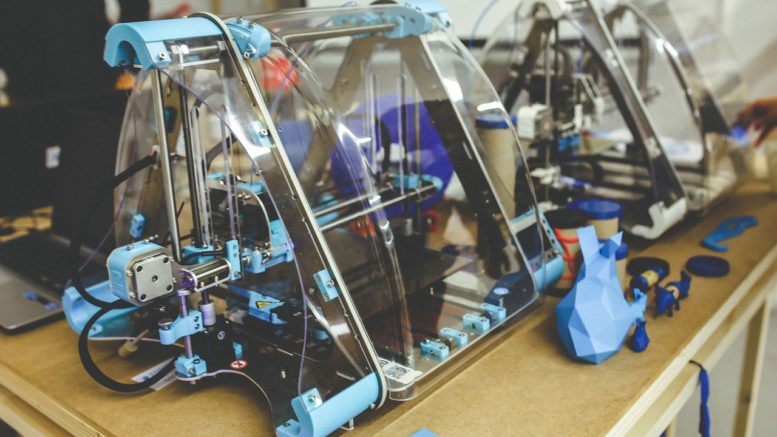Come join us for a quick look at 3D Printing and its potential applications to spaceflight, and the space manufacturing process.
What is 3D Printing?
It can be described as the process builds a three-dimensional object from a computer-aided design, CAD, model, usually by successively adding material layer by layer, which is why it is also called additive manufacturing.
History Of 3D Printing
1974 David E. H. Jones laid out the concept of 3D printing in his regular column Ariadne in the journal New Scientist.
1981 : Early additive manufacturing equipment and materials were developed in the 1980s. In 1981, Hideo Kodama of Nagoya Municipal Industrial Research Institute invented two additive methods for fabricating three-dimensional plastic models with photo-hardening thermoset polymer, where the UV exposure area is controlled by a mask pattern or a scanning fiber transmitter.`
1988: The technology fused deposition modeling is developed in 1988 by S. Scott Crump and commercialized by his company Stratasys, which marketed its first FDM machine in 1992. Fused Deposition modeling is a special application of plastic extrusion.
1995: In 1995 the Fraunhofer Institute developed the selective laser melting process.
2009: Fused Deposition Modeling (FDM) printing process patents expired.
How Does 3D Printing Affect SpaceFlight and New Space Industry?
With the increased development of 3D Printing, new materials are being utilized as part of the manufacturing process. This has included the use of Biological material, metals, and recyclable materials. With this expansion of materials, this means new terrestrial applications. This has led to an expansion of industry with an expected $21 billion industry by 2020.
NewSpace Companies Of The Pacific Northwest Using This Technology
With this expansion in the printing industry on Earth and new materials being used, it is only a matter of time before entire spacecraft and materials being used in space are printed. A great example of this is shown with a $200 million investment by Blue Origin.
With their investment, Blue Origin is getting serious with this technology and shows the confidence in the process. It could be said that with their production facility, Blue Origin is able to provide a great degree of printed parts. This means other companies such as SpaceX and other companies to develop more parts. One day, 3D printers might be able to print things such as CubeSats and other materials. Moreover, producing 3D printers that function in space would be able provide space companies to build strong and lightweight tools in space.
References And Further Reading
https://www.nasa.gov/sites/default/files/files/3D_Printing-v3.pdf
https://room.eu.com/article/the-use-of-3d-printing-for-space-applications
https://www.hubs.com/knowledge-base/aerospace-3d-printing-applications/

Be the first to comment on "3D Printing"